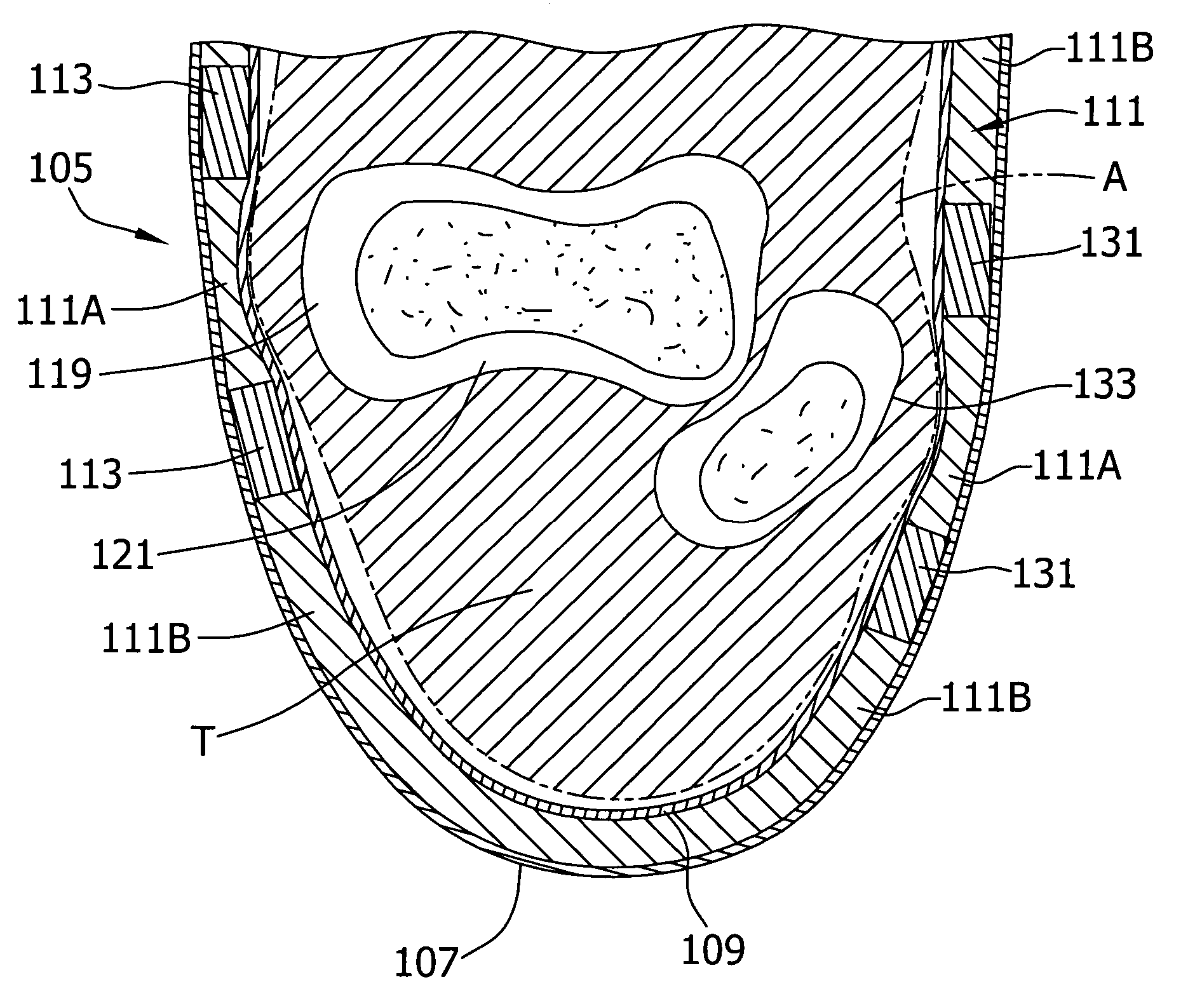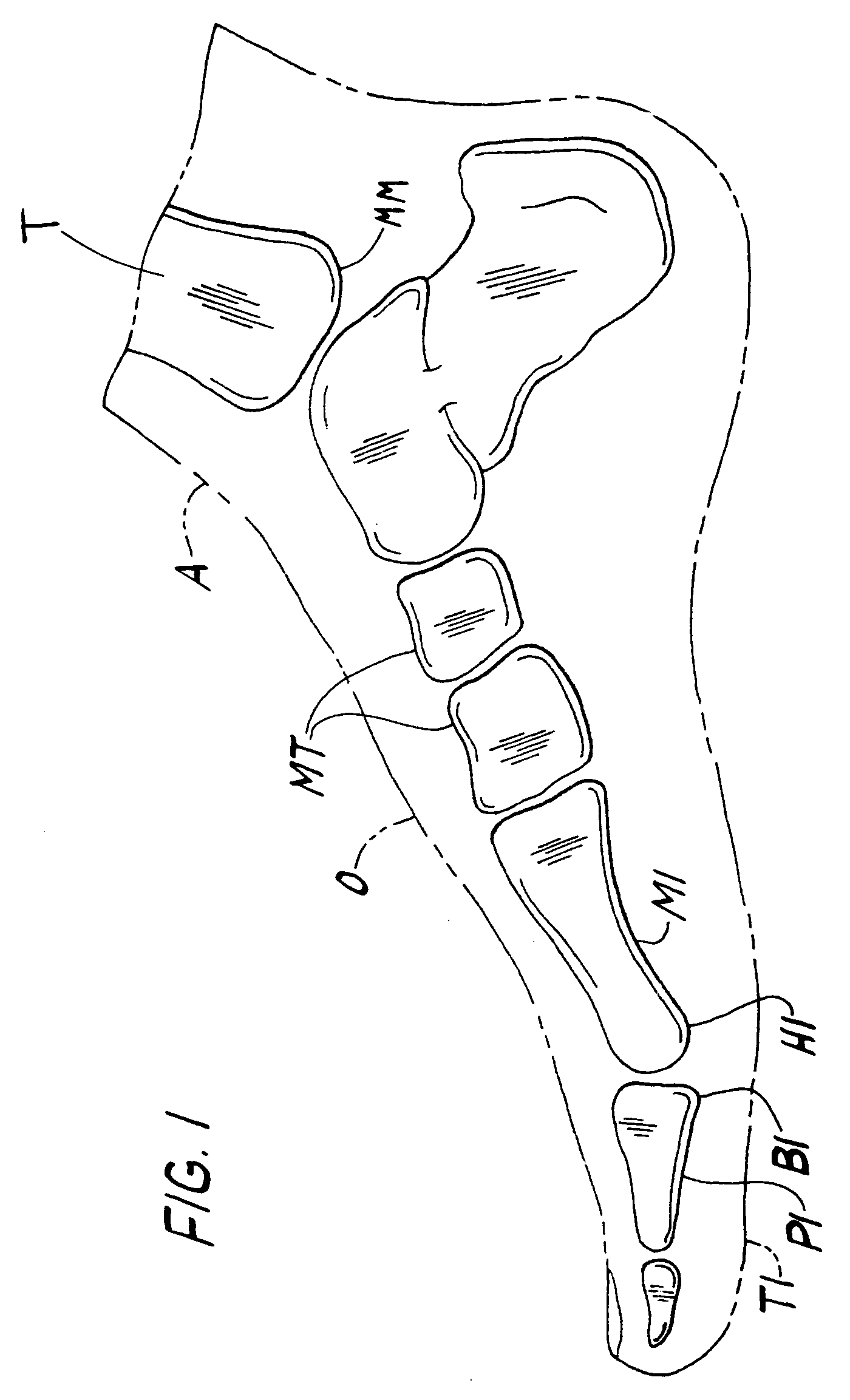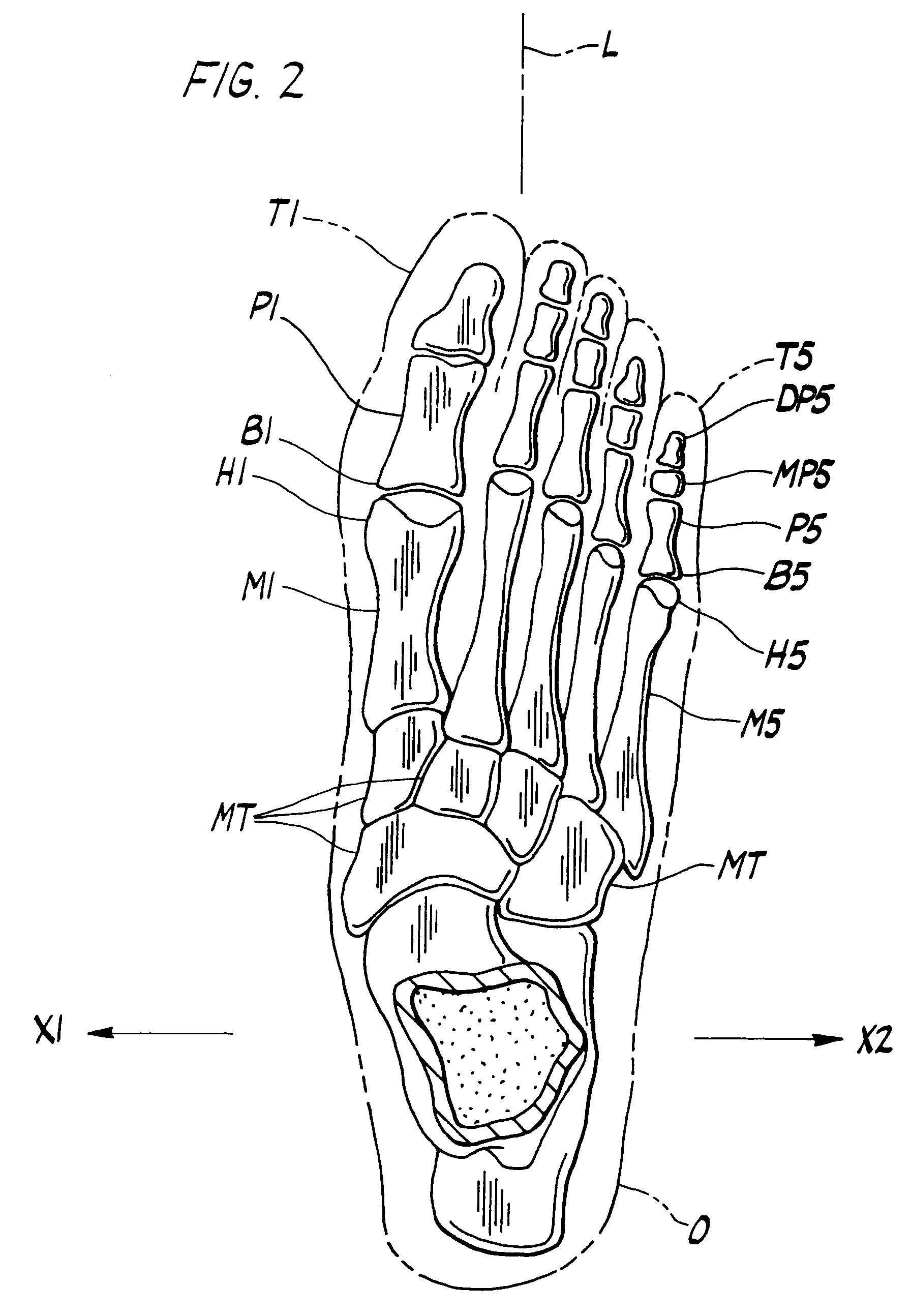Footwear
- Summary
- Abstract
- Description
- Claims
- Application Information
AI Technical Summary
Benefits of technology
Problems solved by technology
Method used
Image
Examples
Embodiment Construction
[0028]Referring now to the drawings and in particular to FIGS. 4 and 5, footwear of a first embodiment of the present invention is designated in its entirety by the reference numeral 20. The footwear 20 includes a sole, generally designated by 22, for supporting a foot (not shown) and an upper, generally designated by 24, attached to the sole for covering the foot. As illustrated in FIG. 5, the sole 22 and upper 24 define an interior 26 of the footwear. The interior 26 is sized and shaped for receiving the foot.
[0029]As further illustrated in FIG. 6, the upper 24 includes a lining 30 forming an inner surface of the upper adapted for engaging the foot O when it is received in the interior 26 of the footwear 20. Although the lining 30 may be made of other materials without departing from the scope of the present invention, in the first embodiment the lining is made of cloth. The upper 24 also includes an outer shell 32 forming an outer surface of the upper and an exterior of the footw...
PUM
 Login to View More
Login to View More Abstract
Description
Claims
Application Information
 Login to View More
Login to View More - R&D
- Intellectual Property
- Life Sciences
- Materials
- Tech Scout
- Unparalleled Data Quality
- Higher Quality Content
- 60% Fewer Hallucinations
Browse by: Latest US Patents, China's latest patents, Technical Efficacy Thesaurus, Application Domain, Technology Topic, Popular Technical Reports.
© 2025 PatSnap. All rights reserved.Legal|Privacy policy|Modern Slavery Act Transparency Statement|Sitemap|About US| Contact US: help@patsnap.com



